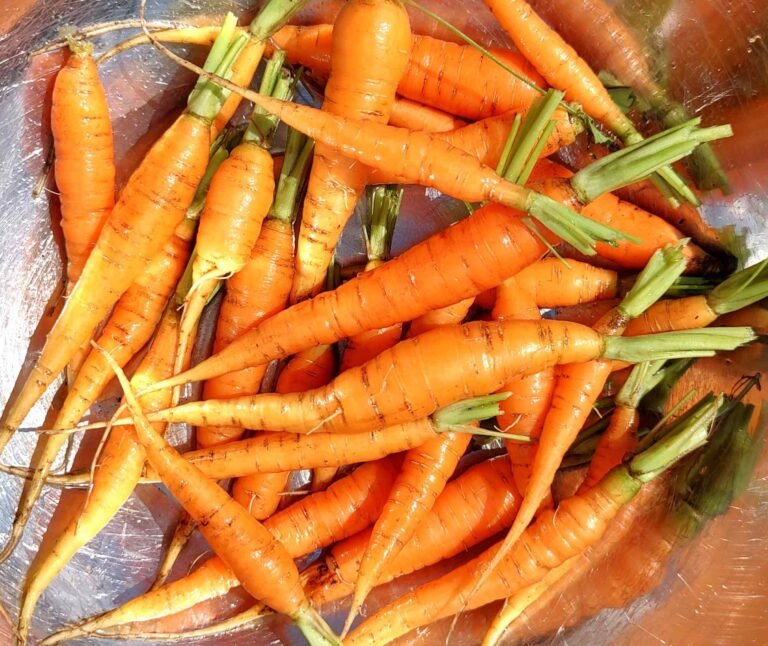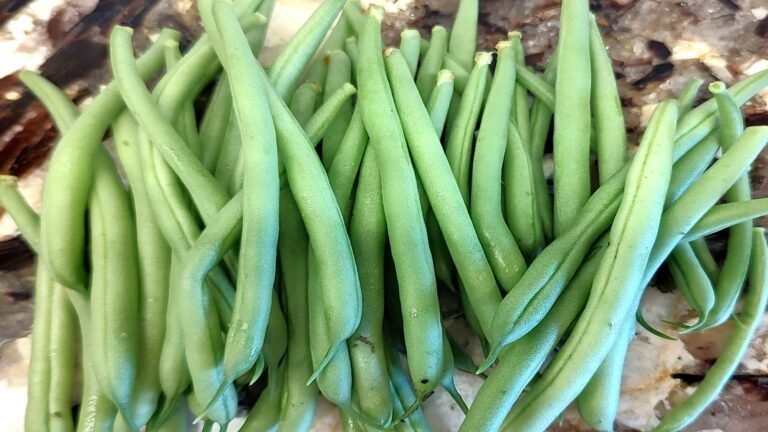Onions are a staple in kitchens around the world, renowned for their flavor and versatility. Raw or cooked, onions enhance the flavor of your dishes. Why not grow your own! Here’s a step-by-step guide to learn how to grow onions successfully in your garden.
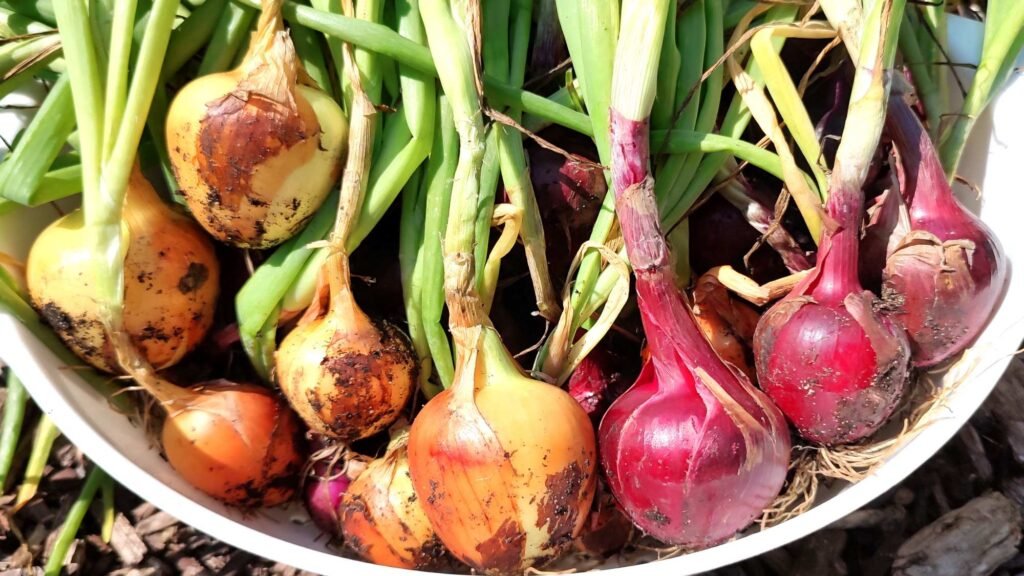
How to Grow Onions: Choosing the Right Variety
The first step in growing onions is selecting the right variety. Onions generally fall into three categories based on their day-length requirements:
- Short-Day Onions: Best suited for southern regions where the days are shorter. They start forming bulbs when daylight hours are around 10-12 hours long.
- Long-Day Onions: Ideal for northern regions with longer daylight hours, usually more than 14 hours.
- Intermediate-Day Onions: Adaptable to a range of daylight conditions, making them a good choice for areas with moderate day lengths.
Additionally, consider the onion type:
- Bulb Onions: These are the classic onions that develop large bulbs and come in red/purple, yellow, and white varieties.
- Bunching or Green Onions (Scallions): These are harvested before the bulbs fully develop and are used mainly for their green tops and mild flavor. They are a great addition to your herb garden.
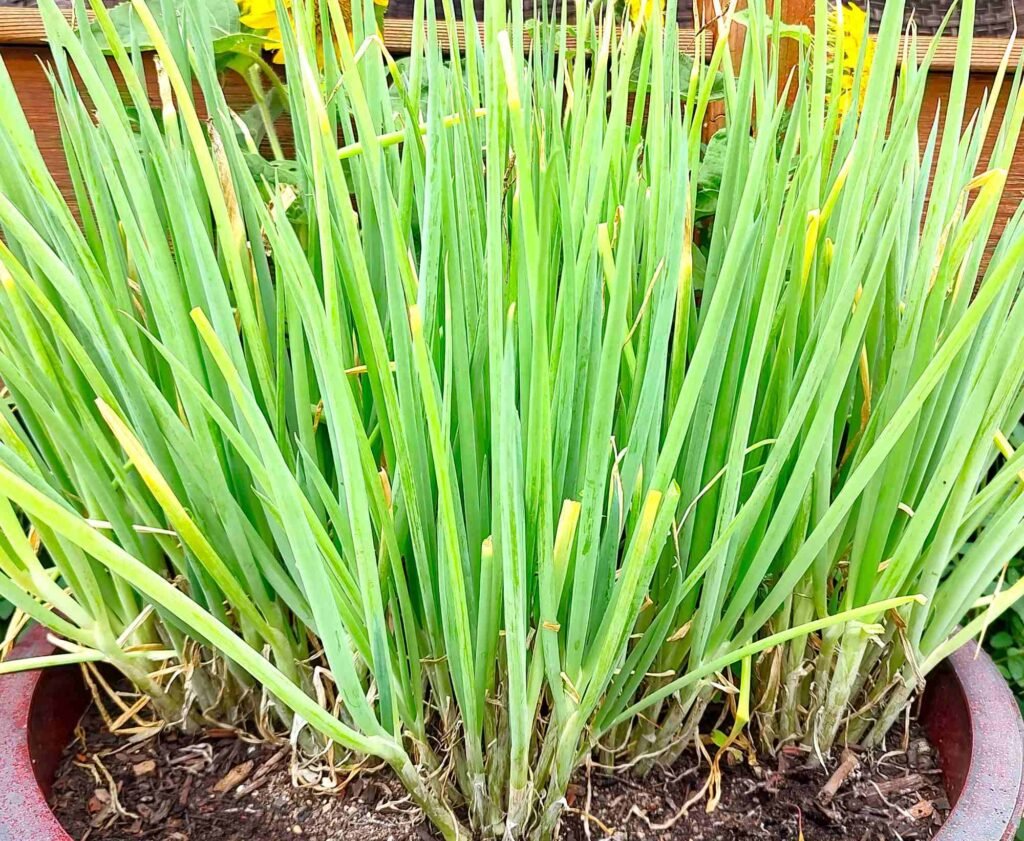
How to Grow Onions: Preparation
- Location: Choose a sunny spot where onions will receive at least 6-8 hours of direct sunlight daily.
- Soil Preparation: Incorporate organic matter such as compost or well-rotted manure to improve soil fertility and structure.
- Drainage: Ensure good drainage by avoiding areas where water tends to pool. Raised beds can be helpful if your soil is heavy or poorly drained.
How to Grow Onions: Planting
Onions can be grown from seeds, sets (small bulbs), or transplants. Each method has its advantages:
- Seeds: Start seeds indoors 8-10 weeks before the last expected frost. Sow seeds 1/4 inch deep in seed starting mix. You can start several seeds in a single tray or cell. Transplant seedlings outdoors when they are 4-6 inches tall and after the danger of frost has passed. See my article about seed starting: How to Grow Plants from Seed
- Sets: These are small, immature bulbs that can be planted directly into the soil. They are convenient and often produce bulbs more quickly than seeds. Push them into the soil so the tops are just below the surface.
- Transplants: Purchased from nurseries or garden centers, these are young onion plants ready for immediate planting. Transplants should be planted at the same depth they were growing in their containers.
Planting Instructions:
- Spacing: There are two methods you can use for onion spacing.
- The first method is spacing individual onion plants about 4-6 inches apart. This works well for sets and if you intend to get the biggest onions possible. If you bought transplants or started your plants from seed, separate each seedling by loosening the soil and gently pulling the plants apart.
- The other method is multi-sowing where you plant a cluster of onion plants together. This method works well for bunching/green onions and for plants that were multi-sown from seed. Instead of separating each seedling, you simply transplant the entire cluster together at the same depth they were growing in their container. Once the onion plants are established but before they bulb, thing to 3-5 plants per cluster. Use the plants that you removed as green onions.
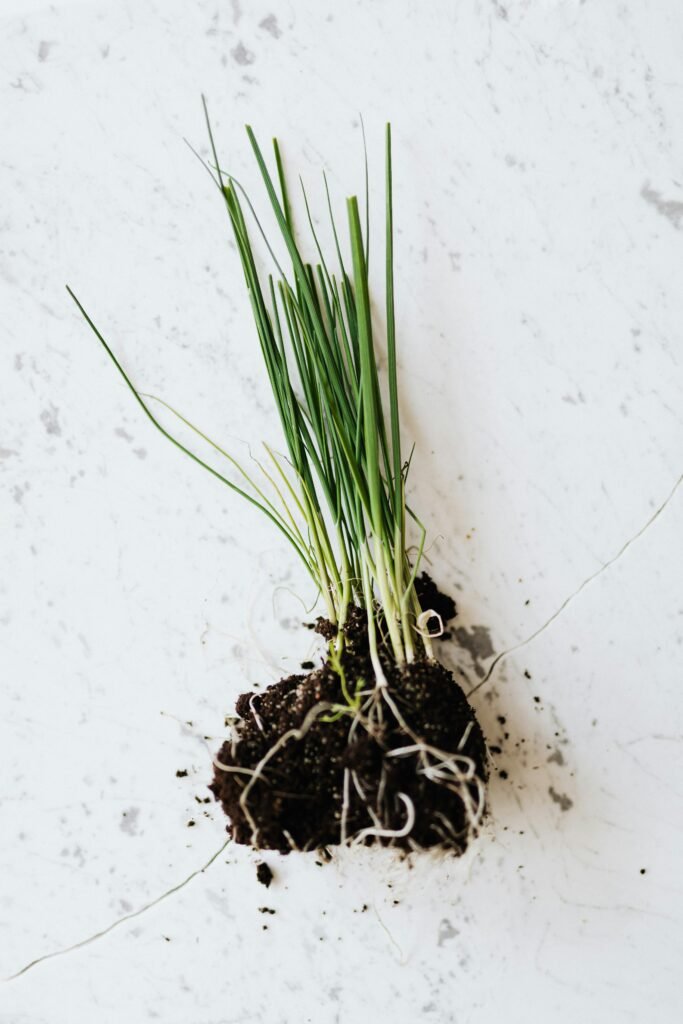
How to Grow Onions: Plant Care
- Watering: Onions require consistent moisture. Water them regularly, especially during dry spells. Aim for about 1 inch of water per week. Avoid overwatering, as this can lead to rot.
- Fertilizing: Onions are heavy feeders. Apply a balanced organic fertilizer or compost at planting time and again when the bulbs start to swell.
- Weeding: Keep the onion bed free of weeds, which can compete for nutrients and water. Be careful when weeding not to disturb the shallow roots of the onions.
- Mulching: Apply mulch to help retain soil moisture and suppress weeds. Straw or grass clippings work well.
How to Grow Onions: Harvesting and Storage
Knowing when to harvest onions is crucial for ensuring they store well and don’t spoil prematurely.
- Timing: Onions are ready to harvest when the tops begin to yellow and fall over. For bulb onions, this typically happens in late summer or early fall. Bunching/green onions can be harvested over and over by cutting the tops as needed.
- Harvesting: Gently lift the bulbs with a garden fork or trowel, being careful not to damage them. Allow bulb onions to cure in a dry, well-ventilated area for 2-4 weeks until the outer skins are papery and dry. When fully harvesting bunching/green onions, gently pull and twist at the base of the plant.
- Storage: Once cured, trim the roots and tops, and store bulb onions in a cool, dry, and dark place. Properly stored, they can last several months. Bunching/green onions can be stored in the refrigerator for 1-2 weeks. To extent my harvest of green onions, I will blend them with cilantro or basil along with some olive oil and freeze them in ice cube trays. Then, I store the herb cubes in the freezer for use in salsa or sauces.
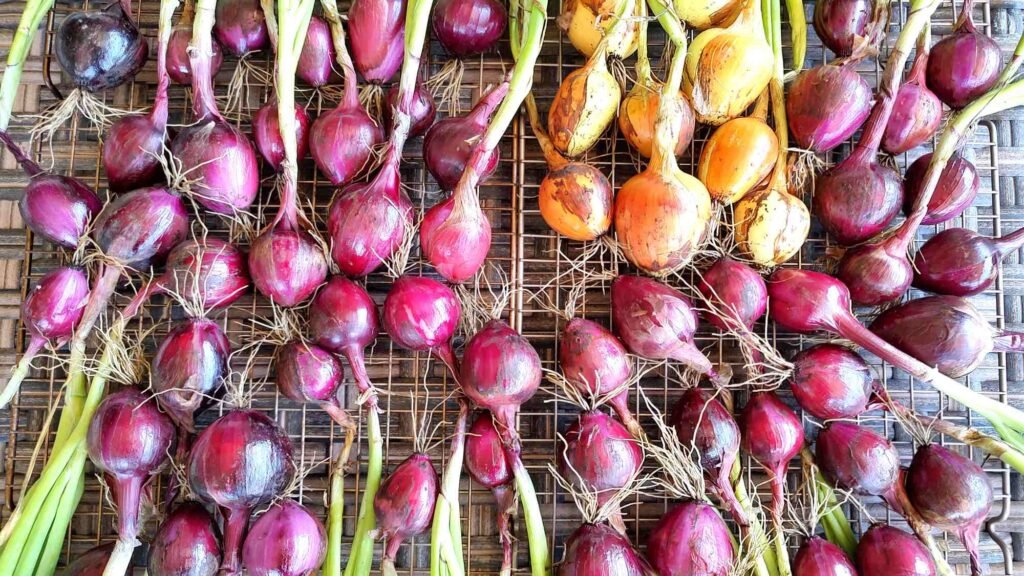
Troubleshooting Common Issues
- Pests: Watch for pests like onion flies and thrips. Use organic pest control methods or insecticidal soap if necessary. Onions are generally deer and rabbit resistant.
- Disease: Keep an eye out for fungal diseases such as downy mildew. Practice crop rotation and avoid overhead watering to minimize disease risks.
Final Thoughts
Growing onions at home is within reach of any gardener. Bunching/green onions are a great starting point for anyone who wants to start growing onions at home. They are simple to grow, perfect for an herb garden, and will last all summer if you only harvest the tops. Each year I get better at growing bulb onions and I’m so glad I stuck with it! Homegrown onions add a touch of satisfaction to every meal.
Check Out My Similar Posts
You Might Also Like

Salmon Patties
Salmon patties are a delicious alternative to the typical fish filet. The salmon is combined with…
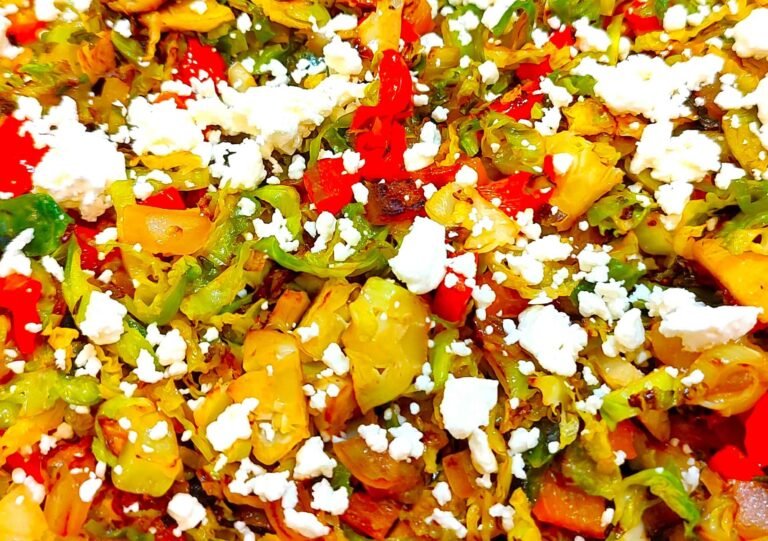
Sauteed Brussel Sprouts
Learn to love brussel sprouts all over again with this delicious recipe for sauteed brussel sprouts….

Corn and Bean Salsa (Cowboy Caviar)
Corn and Bean Salsa (Cowboy Caviar) is a simple and flavorful snack to store in your…

